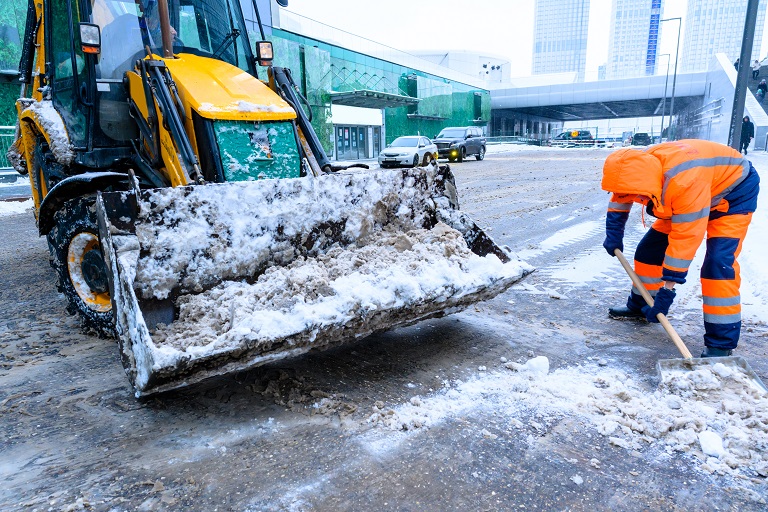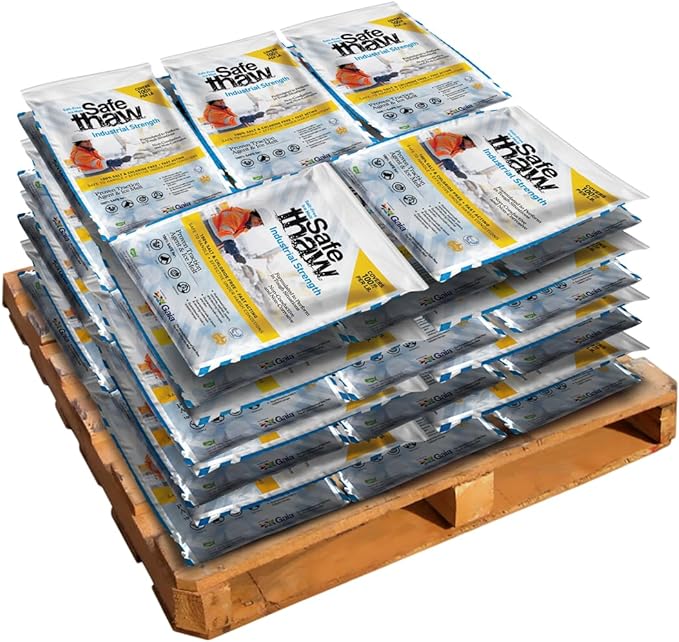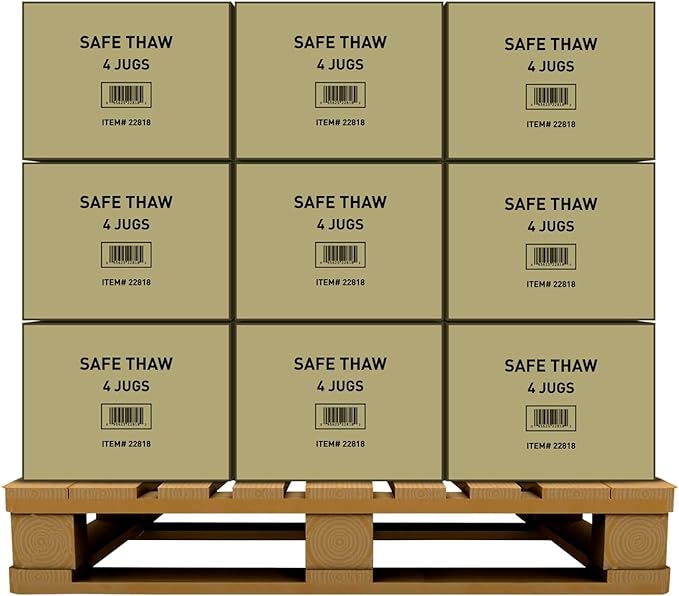Your Complete Concrete Driveway Installation Checklist

Your Complete Concrete Driveway Installation Checklist
Installing a concrete driveway is a significant investment that can boost the curb appeal and functionality of your property. However, ensuring its longevity and durability requires careful planning and proper execution. From site preparation to reinforcement, every step matters. This guide walks you through a comprehensive checklist to help you achieve a sturdy, long-lasting driveway while considering costs, maintenance, and potential issues like concrete spalling and scaling.
Concrete is a popular surface choice for driveways and walkways. It’s durable, low-maintenance and easy to install yourself with the right tools and materials. But there are some things you’ll need to consider before starting your project. In this guide, we’ll cover everything from choosing the right concrete mixture and preparing your site to actually pouring the concrete itself to using the best type of ice melt for concrete!
Site Preparation and Excavation
The foundation of any concrete driveway lies in thorough site preparation and excavation.
Clearing the Site
Start by removing all vegetation, debris, and existing materials from the installation area. Grass, roots, and organic matter can compromise the stability of your driveway, leading to cracks or uneven settling.
Ensuring Proper Drainage
Water is a leading cause of driveway damage. Ensure adequate drainage by grading the site to direct water away from the driveway. Poor drainage can result in pooling, which leads to freeze-thaw cycles and potential scaling.
Excavating to the Correct Depth
Excavation depth typically ranges from 8 to 12 inches, depending on the soil type and intended use of the driveway. This depth allows for a stable subgrade and base material.
Subgrade Evaluation and Soil Stabilization
A strong and stable subgrade is critical to the longevity of your concrete driveway.
Assessing Load-Bearing Capacity
Evaluate the soil’s ability to bear weight using simple tools or professional testing. Weak soils, like clay, may require stabilization before proceeding.
Stabilizing the Soil
To prevent future settling or cracking, compact the soil with a mechanical compactor. For extra stability, consider using geotextile fabrics to reinforce the subgrade and prevent shifting.
Avoiding Future Issues
Proper soil stabilization not only prevents cracking but also mitigates issues like spalling and scaling caused by uneven settling and freeze-thaw cycles.
Decide on a paving, brick, or concrete driveway.
If you’re looking for a driveway that will last for decades, concrete is the way to go. It’s durable and resistant to cracks, chips, and other forms of damage. However, installing concrete is more expensive than paving or brick because it requires more time and expertise to do so correctly.
Consider the best time of year to pour concrete.
If you’re building a new driveway, timing is everything. When you pour concrete depends on the temperature and weather of your region.
If you live in a temperate climate that experiences cold winters and hot summers, it’s best to pour concrete when the air temperature is between 50°F and 75°F (10°C-24°C). This will prevent cracking due to freezing temperatures or moisture in soil below the surface of your driveway.
If you live in an area with freezing winters (below 32°F [-0.6°C]), wait until springtime so that it can acclimate slowly without being exposed to sudden freeze/thaw cycle (which could cause cracks in its surface). Then seal it with an anti-freeze product so bacteria won’t grow on top of it during hot summer months when people are walking around barefoot!

Use durable material
The concrete sealer, driveway, and surface should all be resistant to various elements. For example, if you live in an area with harsh winters, it’s important to ensure that the concrete is resistant to freeze/thaw damage. Some surfaces will crack or chip more easily than others due to their composition and type of curing process used on them.
Protect your driveway
Additionally, ensure that you keep away from salt and other chemicals that may be harmful over time. Use a chemical-free ice melt. The reason Safe Thaw is considered the best type of ice melt for concrete is that it’s free from chemicals and is toxic-free. It’s a urea-based solution that won’t damage the pavers and won’t harm plants around your patio.
100% Salt & Chloride-Free Ice Melt for Winter Storm Protection.
The sealer you use will protect the driveway from water damage, mold growth, and UV rays. It also helps prevent oil stains. You should apply a sealer once every two years to keep your concrete looking its best.
The best time to remove snow or ice from your driveway is before it freezes; this will help prevent damage to the surface of your driveway. If there’s no other option but removing snow or ice after it has frozen on top of your concrete, use an ice-melting product that doesn’t contain chemicals like salts or sodium chloride (table salt). This is the best way to melt ice on concrete. Chemicals are harmful for humans and plants if they get tracked onto grassy areas by people walking across them after coming inside from being outside for too long in freezing temperatures with bare feet/shoes.
Formwork Installation Techniques
Formwork plays a vital role in shaping and supporting your concrete driveway during the pouring process.
Setting Up the Formwork
Construct sturdy forms using wood or metal to outline the driveway’s shape and dimensions. Ensure the edges are straight and level to achieve a professional finish.
Creating Slopes for Water Runoff
Incorporate a slight slope (1–2%) into the formwork to direct water away from the driveway. Proper runoff prevents pooling and protects the surface from scaling caused by prolonged water exposure.
Securing the Forms
Anchor the forms securely into the ground to withstand the pressure of the wet concrete. Use stakes at regular intervals to maintain stability during the pour.

40 Bags
Safe Paw Thaw Industrial Strength Salt-Free Pet Safe Snow Ice Melter and Traction Agent for Concrete, Asphalt, Decks, Lawns, and More, 43 Pound Bag- 40 Bags

100 Boxes
Safe Thaw Industrial Strength 100% Salt/Chloride-Free, Pet/Paw-Safe Snow & Ice Melter and Traction Agent. Use on Concrete, Asphalt, Roofs & On Any Surface, 30 Pound FlexiPail- 100 Boxes

105 Jugs
Safe Thaw Concrete Safe 100% Salt-Free, Pet Safe Snow and ice Melter, Industrial Strength, Chloride-Free, and Traction Agent. Use on Asphalt, Roofs & On Any Surface, 10 Pound Jug- 105 Jugs
Reinforcement Methods for Enhanced Durability
Reinforcing your driveway helps it withstand heavy loads and prevents cracking over time.
Using Steel Rebar
Steel rebar is ideal for driveways subjected to heavy vehicles. Place the rebar in a grid pattern, ensuring it’s elevated slightly to sit in the middle of the concrete for optimal strength.
Wire Mesh for Light Traffic
Wire mesh is a cost-effective reinforcement option for residential driveways with lighter traffic. It provides additional tensile strength and minimizes surface cracks.
Combining Reinforcement Techniques
For maximum durability, combine rebar and wire mesh reinforcement. This dual-layer approach ensures your driveway resists both surface cracks and deep structural damage.
Maintenance Considerations After Installation
To maintain your driveway’s durability and appearance, follow these maintenance tips:
Avoiding Salt Damage
Deicing salts can accelerate scaling and spalling on concrete driveways. Instead of traditional salts, opt for Safe Thaw or homemade ice melt solutions, such as a mixture of vinegar and warm water, to protect your driveway.
Regular Sealing
Seal your driveway every 2–3 years to create a protective barrier against water, chemicals, and wear. Sealing prevents scaling caused by freeze-thaw cycles.
Cleaning and Repairs
Clean your driveway regularly to remove dirt, oil, and debris that can weaken the surface. Address minor cracks immediately using concrete resurfacing products to prevent further damage.
Concrete vs Asphalt Driveway Cost
Choosing between concrete and asphalt driveways often depends on budget, longevity, and maintenance requirements.
Initial Costs
- Concrete Driveways: Higher upfront cost but longer lifespan and minimal maintenance.
- Asphalt Driveways: Lower initial cost but requires frequent resealing and repairs.
Maintenance and Longevity
Concrete driveways last up to 30 years with proper care, whereas asphalt typically lasts 15–20 years. While concrete is more resistant to weathering, asphalt is prone to cracking in extreme temperatures.
Environmental Considerations
Concrete has a lower environmental impact over time due to its longevity, especially if maintained with eco-friendly products like Safe Thaw, homemade ice melt or non-toxic deicers.
Difference Between Concrete Spalling and Scaling
Understanding the difference between spalling and scaling is crucial for effective driveway maintenance.
What Is Spalling?
Spalling occurs when the surface of the concrete flakes or chips away due to freeze-thaw cycles or exposure to deicing salts. It often results in deep pits that compromise the structural integrity.
What Is Scaling?
Scaling is a milder form of damage where the surface of the concrete peels off, usually due to water infiltration and freezing. This typically affects the aesthetics rather than the structure.
Preventing Both Issues
- Use protective sealants to minimize water absorption.
- Avoid harsh deicers; opt for safe ice melt for concrete to reduce surface damage.
- Address minor cracks promptly to prevent water infiltration.
Conclusion
Installing a concrete driveway is a detailed process that requires careful planning, from site preparation to reinforcement. Following this checklist ensures a durable, long-lasting driveway that withstands weather, heavy loads, and daily wear.
By choosing eco-friendly maintenance solutions like Safe Thaw or homemade ice melt and addressing common issues like spalling and scaling, you can protect your investment for years to come. Compare concrete vs asphalt driveway costs to make an informed decision, and prioritize quality at every step to achieve the perfect driveway for your home.
Try Also Our Other Winter Safety Products:
Safe Paw
The Original and #1 Selling Pet and Child Safe Ice Melt for over 20 years. Guaranteed environmentally safe –It won’t harm animals or children, and it won’t damage your property. That’s Safe Paw. Safe Paw can change how winter affects our planet.

Walk On Ice
The handy disposable canister can be taken everywhere, with the same 100% naturally occurring minerals that provide instant traction on ice or snow. Use it on sidewalks, steps, or as an instant traction agent for your car.


